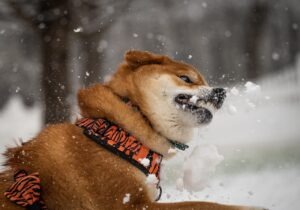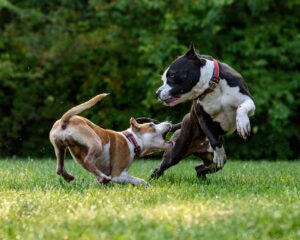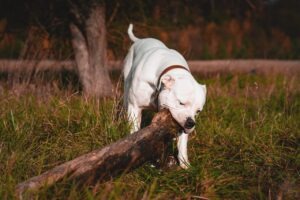 It is only natural for two strange dogs to fight for dominance or over an item, a piece of food or territory each perceives as its own. In fact, the instinct for canines to assert their dominance through aggressive behaviors is so natural that dogs familiar with one another often get into brawls every now and again. Despite being normal, dog fights can be terrifying. Not only that, but they can result in serious harm to one or both involved canines. When another dog attacks your pet and leaves it seriously wounded, you may wonder, who is responsible for the vet bills. Do you have to pay for your pet’s treatment, or does the owner of the assaulting dog?
It is only natural for two strange dogs to fight for dominance or over an item, a piece of food or territory each perceives as its own. In fact, the instinct for canines to assert their dominance through aggressive behaviors is so natural that dogs familiar with one another often get into brawls every now and again. Despite being normal, dog fights can be terrifying. Not only that, but they can result in serious harm to one or both involved canines. When another dog attacks your pet and leaves it seriously wounded, you may wonder, who is responsible for the vet bills. Do you have to pay for your pet’s treatment, or does the owner of the assaulting dog?
Financial Liability Boils Down to Fault
As in a personal injury case, financial liability for injuries that a domestic animal causes to another domestic animal boils down to negligence. Which dog initiated the attack? Where did the attack take place? Did, despite one dog already having an aggressive designation, the owner allow the dog off its leash in a public place?
Because dogs cannot tell you how an attack occurred, determining fault in a dog bite case may prove difficult, especially if the only witnesses in an attack were the owners. If you and the other party cannot agree as to which dog was at fault, you may benefit from the help of an experienced dog attack attorney.
How To Determine Fault in a Dog Attack Case
Many dog fights erupt abruptly and without any noticeable provocation from either animal. This fact makes determining fault in such cases difficult. Not only that, but it often causes a he-said-she-said battle between the owners, who are unlikely to want to admit that their pet is the problem.
Because dog attacks can result in severe or even fatal injuries to the smaller or gentler dog, proving fault is critical. For many owners, it may mean the difference between their pets receiving the care they need and not. In worst-case scenarios, it can mean the difference between the life and death of a beloved family pet.
If your dog was critically wounded by another dog, or if it required extensive veterinary care after an attack, your attorney can help you prove liability. You can help with the process by familiarizing yourself with the factors that may affect fault.
Establish Location
Location plays a major role in dog bite cases, as owners’ responsibilities vary across public and private boundaries. For instance, if your labradoodle was secure in your fenced-in backyard when your neighbor’s German shepherd jumped the fence and attacked her, the shepherd is clearly the instigator. However, if your labradoodle wandered over to your neighbor’s front yard when your neighbor was getting the German shepherd ready for a walk, and if the shepherd attacked, you may be in the wrong. This is for two reasons. For one, your labradoodle technically “trespassed” on your neighbor’s property. Two, you should have leashed her per most local ordinances.
Say, though, that the attack occurred on public property, such as at a park or in a restaurant. In such an instance, you must refer to local leash and restraint laws to determine which owner was negligent.
Look for Indicators of Negligence
Though location plays a major role in determining negligence, there are other indicators of negligent dog ownership for which you can look. In determining fault, consider the following:
- The Other Dog’s History: Regardless of whether your state follows a one-bite law or not — meaning, all dogs get one free bite before the owners can assume legal liability for aggressive behaviors — it helps to know the other dog’s history if you hope to file a claim against its owner. If a dog has a history of acting violently or aggressively toward other animals or people, it can go a long way to supporting your assertion that it initiated the attack. However, if the other dog does not have a violent history but yours does, you may struggle to assert your stance.
- Dangerous Dog Designations: Some municipalities and local ordinances consider certain dog breeds dangerous, regardless of an animal’s history. If the dog that attacked yours is a dangerous breed, strict liability laws may come into play. “Strict liability” means that the owner is automatically liable for injuries the dog causes simply for the fact that it is inherently aggressive.
- Lack of a Leash: If the other dog was running loose when it encountered and subsequently attacked your dog, the dog’s owner may, again, assume strict liability. This is because letting a dog run loose is a negligent act in and of itself.
Gather Evidence
Armed with information regarding the location and the other dog, it is time to gather evidence. Especially in he-said-she-said type cases, the more evidence you can collect in your favor, the better. Types of evidence that can positively influence your case are as follows:
- Videos: If you or eyewitnesses were able to record the event as it unfolded, you may be able to negate all counterarguments. If no one could record the incident in time, ask about security camera footage. If the attack took place on public property, a local business or police camera likely has video evidence of it.
- Photos: After the fact, take photos of both your dog’s injuries and the injuries of the other dog. Deciding parties may be able to ascertain the instigator based on photos alone.
- Witness Statements: You nor the other owner may be able to recall the event objectively, but a bystander might. If other people were present at the time of the attack, ask them to give statements regarding what they witnessed. At the very least, get their names and contact information so that your dog bite lawyer or an insurance agent can contact them in the future.
- Vet Bills: As your dog receives treatment for its injuries, file the bills and associated paperwork someplace safe. You may need vet bills, records of treatment, and proof of out-of-pocket expenses to demonstrate the full extent of your damages. If you must purchase additional supplies to adequately care for your dog, ask your vet to itemize the cost of those as well.
- Paystubs: Caring for an injured dog may be a full-time job, at least for a while. If you miss out on work for any length of time to care for your pet, ask your employer for a statement of lost wages.
Your dog bite lawyer can advise you of what other evidence you should gather to strengthen your case. Moreover, he or she can collect evidence on your behalf if you struggle to obtain it for any reason.
Filing an Insurance Claim
If you can prove that the other owner is liable for your dog’s injuries and related expenses, then you would, in most cases, file a claim against his or her homeowner’s insurance company. Only if the insurance company does not payout claims for dog bites — or if it excludes coverage for certain breeds — would you have to file a claim against the dog owner directly.
When To Consult With a Dog Bite Attorney
Ideally, you and the other dog owner can out the matter of liability and payment without having to involve lawyers. However, if the other party remains stubborn, and if you are sure the other dog initiated the attack, it would not hurt to consult with a lawyer. When you turn to a law firm like Jason Stone Injury lawyers, you can rest assured that a consultation comes with No Obligation, Just Information ®.
Not Trusting What You’re Being Told?
Better Phone Stone
800-577-5188
 START MY NO OBLIGATION CONSULTATION
START MY NO OBLIGATION CONSULTATION











